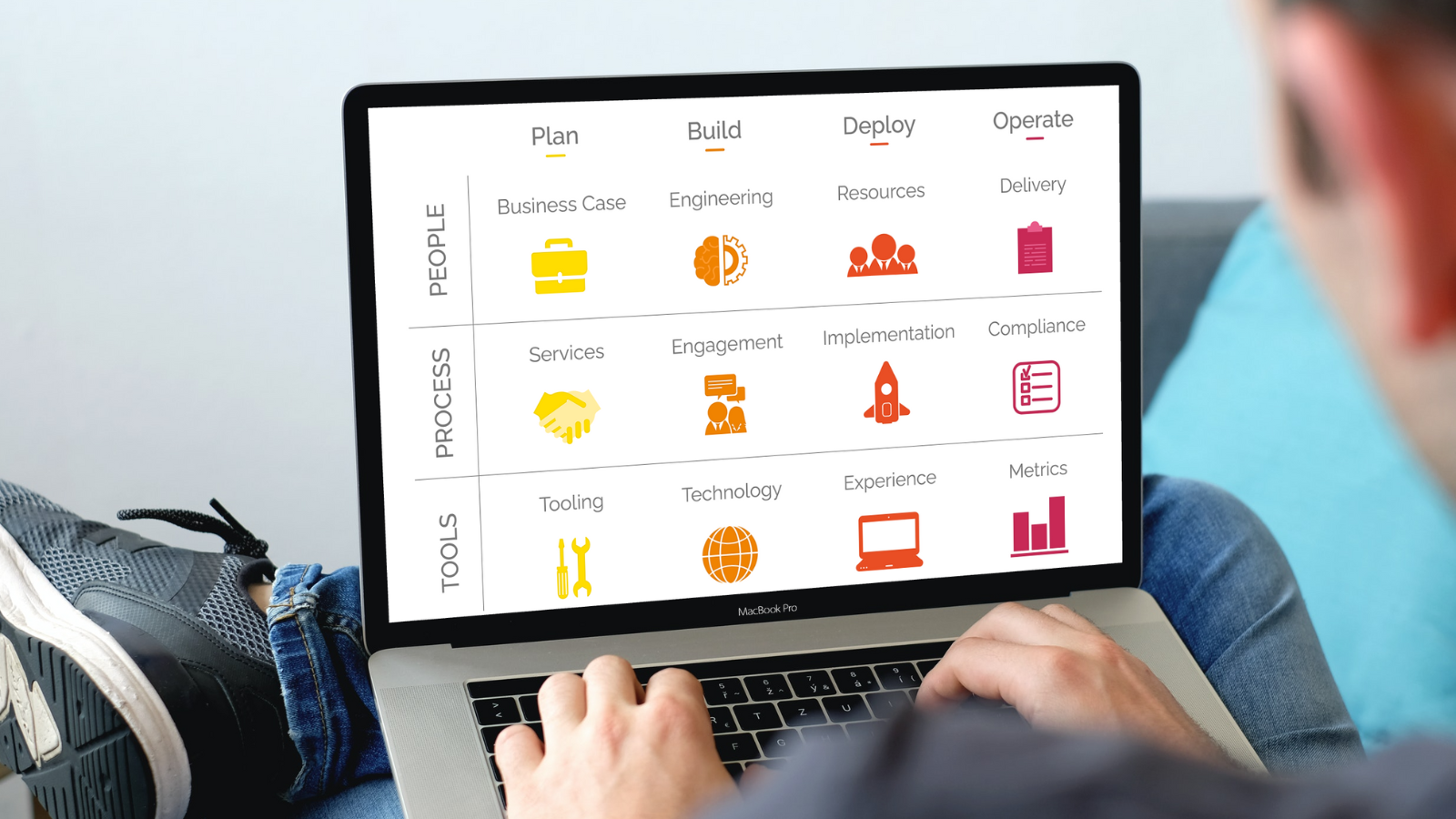5 Non-Technical Skills Your Business-as-Usual IT Team Must Have
May 4th, 2021
6 min read
By Barry Angell

If you ask a bunch of different CIOs what is the biggest barrier to achieving his/her goals, you will likely hear the same answer: the current IT skill gap!
However, this isn't as simple as the IT skill gap that the industry faced in the past 2 decades. For twenty years, we encouraged young men and women in universities around the globe to learn about Object-Oriented Programming, Network Technologies, Web Services, and Service-Oriented Architecture, and within a few years, there were plenty of programmers, network specialists, and other IT professionals available to satisfy the demands.
Today, we have added complexities to deal with. The increasing digitalization, new software delivery models such as Software-as-a-Service, the rise of Artificial Intelligence, robots, and IT automation have an enormous impact on how IT operates today. This, consequently, results in the demand for different skill sets than many current IT professionals have to offer.
In a 2017 CIO survey conducted by Gartner, 80% of the CIOs and IT leaders said that the currently needed skills and knowledge will have very little resemblance to what organizations will need ten years from now. Therefore, having decade-old technical skills isn't enough to be irreplaceable or even relevant in IT anymore:
The skills that have previously been applied to predigital diagnostic analytics are not sufficient for the new real-time data scenarios presented by the Internet of Things (IoT), personal analytics, operational technology and information ecosystems. As a result, newer skills are in short supply and expensive."
This sentiment has only compounded with the COVID pandemic. According to the 2021 CIO Gartner survey, "70% percent of hiring processes of new CIOs rank individual determination and sensitivity as two critical personal characteristics in 2021."
Today's IT Organizations Operate In Business-as-Usual Mode
Gone are the times when big-bang OS migration projects or an enterprise-wide hardware refresh every three to five years dominated the workload of entire project teams. Dinosaur legacy business applications, such as Enterprise Resource Planning or Customer Relationship Management systems are modernized and increasingly moved into the cloud. Software as well as hardware lifecycles have dramatically shortened — altering the way we manage IT. Instead of focusing on larger projects, IT is increasingly managed as Evergreen IT or in Business-As-Usual mode.
Today's IT organizations are under pressure to:
- Deal with new workforce requirements (e.g., millennials, Bring-Your-Own-Device)
- Drive Digital Transformation and innovation to help achieve overarching business objectives
- Become more agile to absorb technology trends (e.g., Internet of Things, RFID, wearables, Augmented or Virtual Reality) much faster than ever before
- Ward off negative consequences from the increasing decentralization of IT as more non-technical employees take over IT-related tasks (Shadow IT, cyber security)
- Retrain IT professionals as their jobs get replaced by automation and AI does much of what used to be done by IT pros today
The velocity of change is constant, much faster and has greater impact on the overall organization.
IT As A Central Service Provider & Facilitator Requires More Non-Technical Business-as-Usual IT Skills
IT is becoming a smaller, centralized IT service provider organization that facilitates and provides resources to the rest of the enterprise while ensuring that the guardrails of standardized process, regulatory compliance and security standards are met, But as the work environment and the job requirements for IT professionals have changed so much (and will continue to change significantly over the next years), what skills will be needed from a member of a Business-as-Usual IT team?
People & Soft Skills
While, traditionally, IT held enormous power within the organization and wasn't always known for the best customer service experience, the tables have now turned. Today, IT is a customer-facing service organization that requires soft skills, such as:
-
Clear & Precise Communication. Keep in mind that, as an IT professional, you might as well speak a different language when it comes to technology. Since you will have to communicate mainly with business users, executive and non-technical stakeholders, you will need to be able to explain technical processes in clear, easy-to-understand language. This is not only true for speaking with end users, but also while pitching your ideas or project to business unit managers.
-
Active Listening. To be successful in your BAU team, you have to not only communicate effectively, but also listen carefully. Since you have been managing IT for a long time, you will need to ensure that no preconceived notions or well-intended assumptions get in the way of actively listening to what your customers require.
-
Team Work. A BAU team isn't contained to a set job role anymore but works closely with members of other business units and project teams to achieve cross-functional delivery. This requires a collaborative attitude and teamwork skills. Consequently, stepping up to the plate when needed, but also knowing when to let others take the lead is important in achieving a harmonious IT service.
Furthermore, soft skills like leadership, the ability to mentor, flexibility, and creativity will become increasingly important.
IT As Business Liaison: Better Business-Relevant Skills
As IT becomes the central service provider and facilitator for the business units they serve, IT professionals will increasingly become liaison officers with their customers. This requires a new set of business-oriented skills, such as the ability to sell, negotiate, present your ideas and excite your customers:
-
Sales. With constant change comes higher business disruption. For example, you will have to sell each new Windows 10 upgrade, new IT automation initiative, and any other IT modernization project to your business unit management. They don't only have to agree but also must understand why the update is needed, what benefits they can look forward to and ultimately see the value in your work. Otherwise, they will go back to trying to run IT by themselves — resulting in Shadow IT organizations, application sprawl and other problems.
-
Negotiation. No matter what your internal position or assigned task, chances are you will need to negotiate both internally, and externally with third-party vendors or external contractors, employees or customers. This means you have to be able to reach a win-win situation that satisfies both sides.
-
Public Speaking & Presentation. No matter whether you are holding a face-to-face meeting with your business unit manager, a video conference with your team, or a BU-wide presentation, you will need to get in front of people from time to time, articulate your ideas or concerns and communicate them effectively. This means, you need to familiarize yourself with presentation tools, practice public speaking and, of course, be personable and approachable,
Strategic Mind Set Regarding Project Management & Scheduling
For many, especially to any IT Project Manager who has ever undergone a massive IT Transformation project that was soon hopelessly over budget, late, and beyond planned capacity, managing IT in "Business-as-Usual" mode with smaller, more managable updates sounds like a dream come true. In theory, it is easier to scope, easier to plan for, and faster brought to completion. However, since everything is in a much more agile, liquid state, strategic planning, diligent project management and scheduling, and the right tooling to enable smooth delivery are key. Without those, you will soon find yourself in a mighty mess!
Data Driven & Analytical Thinking
Data is everything in this environment, and in disparate places! Understanding the big picture is becoming more important than ever, especially when managing multiple simultaneous small as-a-service initiatives. For example, when managing thousands of devices with countless interdependencies in a Windows 10 version update, you have to be on top of your estate at all times. Being able to think analytically through a problem and utilizing a data-driven mindset will enable you to not only serve your clients and stakeholders better by providing them with the right information at any point in time, but will also allow you to find opportunities to become more efficient and streamlined.
Understanding of User Experience
Last, but not least, it is critical that you have a strong understanding of end user experience. Your clients will tell you their business requirements (often in an endless laundry list of must-haves), but it is your job to deliver the best user experience. As-a-service means more change for your end users to handle, and with greater disruption comes a huge opportunity to worsen the perception of IT. How you engage with your end users is a critical piece of the as-a-service puzzle. This could in the form of a self-service portal that allows your business users to request certain hardware or kickoff a required service (e.g., initiate their Windows 10 upgrade process), leverage automated communication capabilities and workflows to effectively communicate any changes, or provide up-to-date dashboards to your liaisons.
Conclusion
As an organization's context and overall mandate change, its management approach, tooling, and skill sets must keep pace to remain relevant. Due to cloud computing, IoT, SaaS, and other IT trends that result in a faster velocity of change, IT as an organization, as well as individual professionals, must adapt as well.
The skill set of modern IT professionals is much more customer-oriented, which requires soft skills such as efficient communication, collaboration, and active listening skills, as well as business-focused, which includes excellent sales, negotiation and presentation skills. Furthermore, to be successful in the new, more liquid Business-as-Usual environment, IT pros must be efficient product managers and schedulers. analytical and data-driven and have solid handles on user experience concepts.
Have an IT Transformation project planned or are you considering Evergreen IT? Schedule a personalized consultation today and benefit from our decades of experience in helping enterprises around the globe automate their IT Transformation management using our tool, Dashworks. Click below to get started!
Barry is a co-founder of Juriba, where he works as CEO to drive the company strategy. He is an experienced End User Services executive that has helped manage thousands of users, computers, applications and mailboxes to their next IT platform. He has saved millions of dollars for internal departments and customers alike through product, project, process and service delivery efficiency.
Topics:



![What is a Digital Workplace? [Definition]](https://blog.juriba.com/hs-fs/hubfs/What%20is%20a%20Digital%20Workplace%20%5BDefinition%5D.jpg?width=1600&height=900&name=What%20is%20a%20Digital%20Workplace%20%5BDefinition%5D.jpg)





















